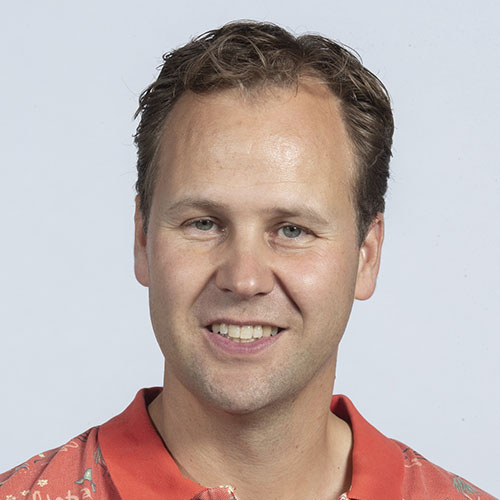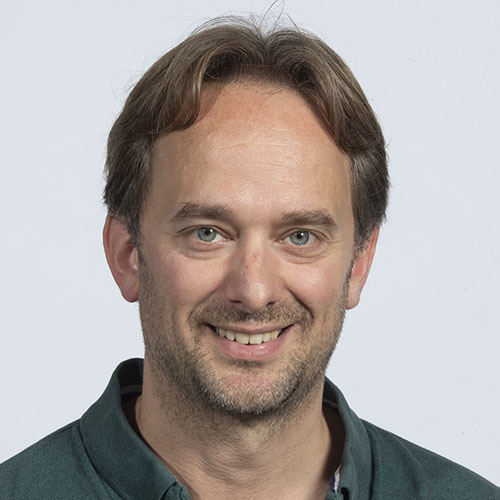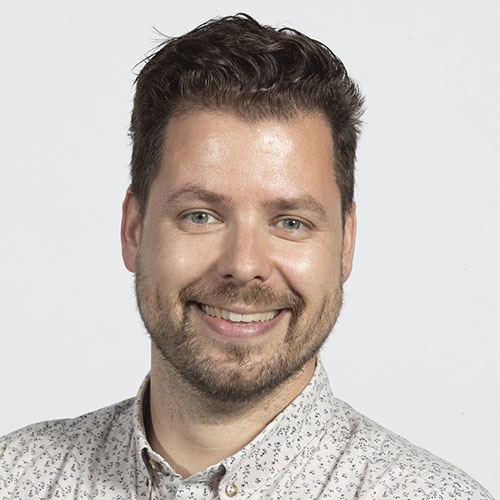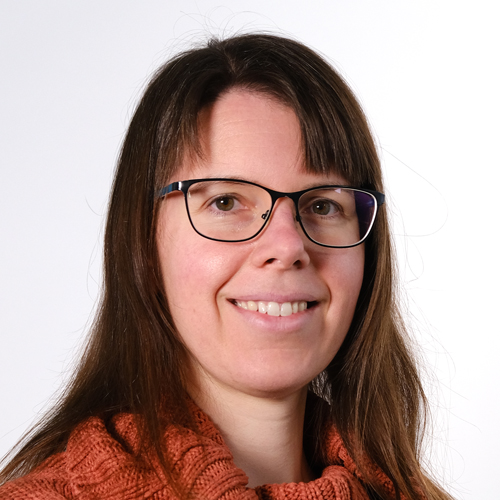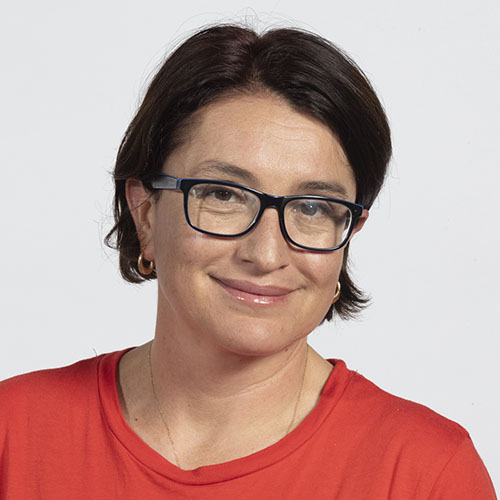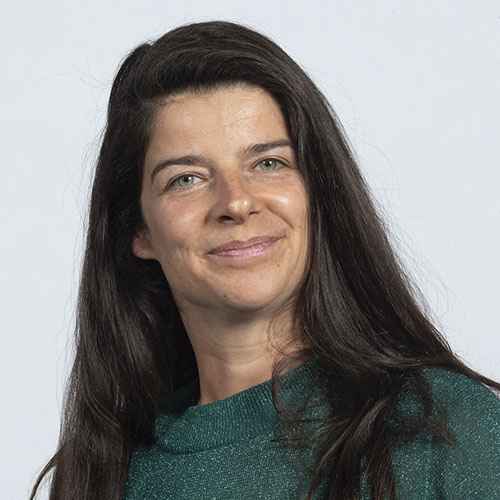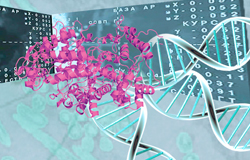About our Department
Our research
Erasmus MC has the largest academic dermatology department in the Netherlands. All the principal investigators combine clinics with research. This combination enables us to identify clinically relevant questions and motivates us to translate the gained research insights back to the patient. This interaction between care and research is the core of the department’s research.
This close relationship implies that we have a strong interest in biobanks of diseases of interest, use routine collected (clinical, pharmacy, claims) data and are involved in many clinical trials (preferably with a laboratory component). We are also involved in the large population based cohorts in Rotterdam (Generation R and Rotterdam Study).
The research methodologies best development in the department are epidemiology (in the broadest sense), clinical research and translational research, especially in immunology and oncology. To achieve a high standard of research, we collaborate in institutional, national and international multidisciplinary consortia and networks. The department is recognized as one of the leading centers for dermato-epidemiology globally.
Dermatological Footprint 2025
Dermatological footprint 2025
A footprint is dynamic: one leaves a visible trace in the soil where one’s feet were placed. The dermatological footprint 2025 flows from our previous steps and illustrates the journey we are making as an organization. The specific print made by a foot depends on the kind of soil, i.e. the context, where the footsteps are left. Plans to be made should fit in current societal trends and the landscape of Dutch care in general. Our footprint is unique, as skin lines, and sustainable care and collaboration are identified as most important weight bearing points.
With our ecological responsibility in the back of our minds, we will focus on sustainable care. As sustainability goes beyond our department, we will actively join Erasmus MC working groups making efforts for specific aspects of sustainability within our organization, for our employees, and our surroundings. In addition to the ecological improvements made on the level of the organization as a whole, we specifically want to contribute to a sustainable model for dermatological care. Such a sustainable model of care would address the needs of the current generation, without endangering the needs of future generations. Many innovations in care, such as network care or digital care, aim to reduce costs and/or improve quality. They also contribute to our ability to keep offering high quality, sustainable care in the long run. The corona crisis has demonstrated the importance of organizing care in such a way that it remains both responsible and accessible. As a last resort for patients with skin diseases, we aim to be accessible for those patients who make an appeal to us. The sustainable employability of our staff and our residents, with attention to vitality and resilience, is a spearhead topic in the dermatological training program.
The colorful rendering of the dermatological footprint 2025, is a playful allusion to foot sole reflexology. It reflects the notion that everything is connected and stands for the ‘network idea’ in our multi-year plan. Collaboration is the second important pressure point in our plans towards 2025. In the previous years, we could realize many of our ambitions. To push our limits, we aim to collaborate more intensively with others. Internally, this means giving more attention to multidisciplinary care and integral care. Externally, this means co-operating more with other organizations providing dermatological care. In research, more crossover fertilization will take place both within and across the walls of Erasmus MC. We are strengthening the collaborations with Technical University (TU) Delft, Erasmus University and international partners. The dermatological training program will offer more options for advanced education within Erasmus MC, but also an increased regional organization with our five educational partners in South West of the Netherlands. With the other UMC’s we aim to come to uniform national criteria for the dermatology curriculum in the medical school and dermatological residency programs.
Care
We stand for high quality and accessible care for patients with severe or rare conditions across the whole spectrum of dermatology. We are also there for patients and colleagues who need extended expertise. Our ambition is to reach the milestone of at least 70 percent ‘academic’ patients within the next five years.
Within our field we have a focus on patients with skin cancer, hidradenitis suppurativa (HS), eczema, and pediatric dermatology. These clinical areas of expertise have a strong link with (translational) research. In addition, we have unique clinical expertise in the area of phlebology and laser care.
The ‘right care in the right place’ is a theme in modern medicine and is pivotal to keep dermatological care sustainable. In the coming years, we want to anchor the lessons learned from the corona crisis in our approach to care. We want to achieve at least 20% care at a distance, through non-physical consultations. We want to be a forerunner in innovative digital communication with patients and colleague healthcare practitioners. When properly organized, care at a distance, like working from home, will lead to less personal movement, less travel time, less traffic and parking problems – without affecting the quality of care. In the context of ‘do or don’t’ we will actively endorse responsible omission of (follow-up) care or shift this care towards the first- or second-line non-academic institutions. Within our own organization we will position the independent dermatological care center DermaHaven (a 100% daughter company of Erasmus MC – www.dermahaven.nl) as the place for second line and follow-up care of tertiary patients with a concrete care plan. This leads to a dermatological continuum allowing us to offer high quality, affordable, and accessible dermatological care within the region and beyond. Moreover, DermaHaven is a unique hub in the collaboration with other second line dermatology centers for Mohs micrographic surgery for skin cancer. In this way, we organize this surgical therapy in the most efficient manner and maintain high quality outcomes together with our colleagues. Finding the right balance between centralized and decentralized care is a huge challenge. We accept this challenge with respect and collegiality, aware that centralization should not be restricted to Erasmus MC, depending on the disease, type of care and available expertise.
The concept of integral care will be further developed in relation to the patient. This implies creating better registration of and better access to care information for the patients and their healthcare practitioners (e.g. registration at the source and a personal healthcare environment). This will help increase the autonomy and participation of patients. In contrast to the digital connection, we aim to also increase the effort given to psychosocial wellbeing of our patients with chronic skin conditions (collaborating with medical psychology). We believe that such an integrated multifactorial approach will lead to a more sustained effect of our interventions.
As we share knowledge with colleagues and educate the next generation, we need to keep reinventing our academic position. This implies that we will introduce and validate innovations in care and explore the boundaries of knowledge of our medical field. To this end, we closely collaborate with other medical specialties (among others: medical and surgical oncology, head and neck oncology, plastic surgery, ophthalmology, vascular surgery, radiology, allergology, clinical immunology, pediatric medicine and cosmetic medicine). On the one hand this enables delivering optimal care, while on the other hand we can keep deepening our knowledge and push the boundaries of the footprint. These multidisciplinary collaborations express themselves as joint consulting hours, where necessary, and structural consultation moments where a patient’s case is discussed from different perspectives. For our clinical spearheads, we
are developing multidisciplinary care routes, which are useable both within Erasmus MC as elsewhere, for instance HiCare and HuidKOMPAS. Extra attention is given to the five affiliated training hospitals and those institutions who are part of the Erasmus MC holding. We keep sharing knowledge through participation in postgraduate courses and meetings, which we also organize ourselves. Furthermore, we offer fellowships to (inter)national colleagues in the areas of HS care, Mohs micrographic surgery, phlebology, and cosmetic dermatology.
Our directing function will not be confined to the local region, but extends nationally, for instance in NFU centers of expertise, and internationally, for instance in the European Reference Networks (ERN). Our ambition is to expand our involvement within the existing ERNs and to participate in a novel ERN for rare (skin) cancers. Through this recognizable clustering of knowledge and expertise, the care for rare and complex conditions becomes more accessible for (inter)national patients.
Research
The ultimate goal of our research is to improve the care for patients with skin diseases. This implies that our research is closely connected to patient care and spans across qualitative research, epidemiology, public health, clinical trials, and translational research. A second, measurable goal is to be cited at least 2.5 times the world average of dermatology departments (MNCS 2.5-3.0). We want to be in the top-20 of leading dermatological research institutes worldwide. Both goals can be achieved, if we plan our steps carefully.
Both from the perspective of diseases as from the methodological perspective, we cover a broad research field. The challenge is to keep our focus on the most important research lines, while remaining open to new developments. This means that the three large research lines (oncology, hidradenitis suppurativa, and eczema) are structurally supported, to sustainably invest in knowledge and know-how. To this end, we need to create room within our structural research budget to appoint post-docs, PhDs and/or research coordinators. The principle investigators within the three large research lines are encouraged to aim high and submit one or more proposals for governmental funding including ERC yearly.
A specific goal for the next five years is to strengthen pediatric dermatology, next to eczema, as a research line. Erasmus MC’s Sophia Children’s Hospital has a unique position in the Dutch care and research landscape and the therapeutic field of pediatric dermatology is maturing rapidly in the coming years. This combination will give us the possibility to have clinical and scientific impact in this part of dermatology. In addition to the large research lines, it is crucial that we keep space to incorporate ‘new projects’. It must be possible to create room for feasibility studies to investigate other conditions and/or diagnostic or treatment modalities, to see whether they are interesting and viable enough to be further developed. Ideally, research balances vested interests with new ideas without losing focus.
To make our scientific footprint larger and deeper, clinical and epidemiological research will be complemented with more translational research. To achieve this translational deepening, we will on the one hand make use of existing data and materials, and on the other hand create, fill, and use well-embedded biobanks for each of our clinical spearhead topics. These biobanks will be the future ‘gold mines’ for our most important lines of research and reflect the connection between our clinics and research. In addition to primary translational research, the biobanks will also be used to validate findings from our population cohorts. Subsequently, the biobanks will be explored in collaboration with our laboratory, the Erasmus MC Core Facilities (CoFa), and external parties. We aim to increase the conventional biobank with imaging material of skin diseases and accompanying histopathology. We will start with oncology, but our goal is to create a structured image repository for the different skin disorders. This image repository will be used to develop and evaluate new forms of eHealth diagnostics, based on machine learning and artificial intelligence (in collaboration with TU Delft within the Convergence program). Another extension of the biobank lies in the area of the microbiome. Within Generation R and the Rotterdam Study we will analyze the collected microbiome samples in the coming years. This will provide a great source of reference material to build upon within the HS and eczema research lines.
Within the convergence triangle with TU Delft and the Erasmus School of Health Policy and Management (ESHPM), dermatology is focusing on ‘big data’ and evaluation of care. The collaboration with TU Delft will mainly be in non-invasive diagnostics, including image and data analysis with artificial intelligence. Using the planned image repositories of clinical skin disorders comes to mind here, but also the existing collection of 3D facial images within the Rotterdam Study. The automated image analysis of histological coupes might help to better stratify between low and high risk patients with skin cancer (squamous cell carcinoma and melanoma). In addition, the planned translational deepening of our research will generate a wealth of data, which requires investing in extra bioinformatics expertise (multilevel-omics integrated data analysis). In collaboration with ESHPM we will target evaluation of and innovations in care. Our department has a lot of experience with mining routine pathology, cancer registries and claims data (e.g. IKNL, PALGA, Pharmo and Vektis) to map and validate existing care. The connection with ESHPM brings in extended expertise and will be intensified starting in skin cancer related research. In addition, we will pay more attention to implementation and innovation of care in the coming period. The non-invasive diagnostics of skin tumors by way of image analysis will be the main starting point. This eHealth research project will have an important qualitative component, supplemented with cost-effectiveness studies analyzing the use of these tools in daily practice.
In the area of clinical trials, we have set several goals for the next few years. The first goal is to have investigator initiated clinical trials running, preferably externally funded, in each of our clinical spearhead topics. Ideally, these would be multicenter trials that are either studying innovative interventions or fall within efficiency research, and are linked to a biobank. With respect to innovative treatments, we aim to participate in more phase I and II studies, together with the Center for Human Drug Research (CHDR) in Leiden, the collaboration with which has to be brought to the next level. With respect to large, international, pharma-initiated registration trials within our spearhead topics, we want to increase our involvement in phase I and II trials and in the design of the RCTs. With respect to efficiency clinical trials, we have on the one hand cost effectiveness studies of existing (combination) treatments, and on the other hand stratified care where (bio)markers are leading the selection of the most optimal treatment. We recognize the dependency on regional and (inter)national collaboration for these large clinical trials. This holds especially true for rare conditions, or for conditions and/or treatment indications that are more often seen in non-academic medical centers. We aim to play a leading role in a national network connecting colleagues with an interest in clinical research.
Scientific collaborative synergy is created in Academic Centers, Core Facilities and within the Erasmus MC Cancer Institute, but also with external partners. We aim to perpetuate existing relations with other national research institutes and commercial (pharmaceutical) companies in long term ‘preferred partnerships’. Our goal is to develop clear long-term visions on these collaborations, based on mutually added value. These partnerships go beyond finances and stimulates collaboration based on content (including project applications), sharing personnel, cross-fertilization of knowledge, and optimally using existing infrastructure and expertise. Opportunities to strengthen our international network, including Harvard University, Stanford University, Michigan University, University of Ghent, Copenhagen, and Nottingham remain a priority. Intensifying these collaborations happens with the aim to establish a connection with international top institutes, in order to position ourselves within the global top-20 of dermatological research institutes.
Education
The ‘trias academica’ remains incomplete without considering teaching and education. In education we deploy dermatologists with great didactic skills and a passion for teaching, to maximize the enthusiasm for our topic among medical students. After all, this is the first impression of dermatology they get. Forced by the corona crisis, we will further develop online and hybrid forms of teaching. We took the lead in establishing an education working group within the Dutch Society of Dermatology to collaborate with other UMC’s to come to national criteria for dermatological training within the medical education. The compulsory dermatology internship for medical students is of utmost importance. In addition to our substantial contributions to the minor programs in the medicine study such as ‘head and neck oncology, ‘infection and immunity,’ and ‘to bleed or not to bleed’, we have the ambition to organize an additional minor in the master phase. Within the medical curriculum, we will put the importance of dermatological training in the education of general practitioners on the national agenda. This is intended as a sustainable investment in the collaboration with general practitioners, resulting in better referrals from the first to the second line of care. In education and training, we will pay more attention to ‘diversity and inclusiveness’ as far as teachers, students, educational material, and cases are concerned.
Organizing and providing continuing medical education for colleagues and other professionals is an important part of the job. Here too, online and hybrid teaching will be further developed and provide the opportunity to reach more participants. In addition to our recurrent regional meetings (‘Skintermezzo’), we will continue our Cells to Surgery for skin cancer and other Into symposia. After a successful IntoVeins, IntoFlammation will be the first hybrid symposium in 2021. Individual staff members will continue to play important roles in organizing (inter)national meetings and educational meetings. We aim to keep participating as speaker in advanced education programs for dermatologists and explicitly also for colleague medical specialists at for instance their scientific meetings.
Within the dermatological training, sustainability and collaboration can be recognized in three themes: regionalizing the education, taking care of residents and educators, and advanced internships for residents.
Together with our five affiliated training partners in the South West of the Netherlands, we have created a regional education plan for the dermatology residency program. A resident will be trained as a dermatologist with solid, all round knowledge within the region. Persistence, enthusiasm and ambition are developed within the program, as are individual skills. The care that these residents provide, is knowledgeable, skillful, with a holistic approach which put the patient’s care demand upfront. We collaborate intensively, share ‘best practices’, and create short lines, for example through a ‘warm transfer’ of residents for their peripheral internships. The possibility of low-key contact between educators, is pivotal for a successful collaboration. In addition, problems with education, a roster, or the functioning of a resident, might they occur, can be discussed early on. Further individualization of the training, with made-to-measure internships will become the norm. With regard to recruitment, we aim for a professional approach, taking into account the diversity of dermatologists that are needed, regionally and nationally.
Taking care of residents and educators is a focus point of the central education committee of Erasmus MC, which is fully shared by our partners in the South West Netherlands. We at the dermatology education program feel the urgency to improve vitality and resilience of our residents, MDs, and members of the education team. By offering individual coaching, for instance through the ‘challenge & support’ program, working on the dynamics of the resident group, practicing giving feedback, giving attention to the roster, work hours and perceived workload, and through special training sessions devoted to vitality and resilience, we aim at thorough self-knowledge. This prepares the resident for the future challenges of professional life. As education team, we collaborate intensively to establish the development of these social skills. With a seat in the management team, the roster committee, the quality committee and through the educational meetings, the residents have autonomy and can co-direct their training. For educators we offer intervision, i.e. peer-coaching. To professionalize educators, we provide made-to-measure courses, open to all educators in our region.
After receiving a good foundation in general dermatology, we work with our residents on the implementation of Entrustable Professional Activities (EPA’s) through further individualized training. After their internship in a peripheral hospital, the residents choose a specific clinical profile through an advanced internship. Individual talents play an important role when making this choice. Preferably, this internship results in EPA level 5 by giving supervision. Our target is that a least 25% of the residents can provide supervision in the area of his/her advanced internship. The residents can complete these advanced internships with a certificate, comparable to the Mohs certificate. We have the ambition to expand the number of advanced internships, and offer them to residents of other centers as well. Participating in multidisciplinary meetings and leading multidisciplinary consultation hours, during these internships, gives knowledge which transcends the boundaries of the resident’s own discipline. We stimulate cross-fertilization with adjacent medical specialisms, to expand the level of knowledge of our residents, and to broaden their horizon with inter-professional internships. This is an investment in successful future collaboration with colleagues. To be better prepared for the societal role as a doctor, an internship in clinical leadership can be organized. This includes participating in the MT, taking the role of chief resident, and training in management skills. If the resident takes the initiative for a self-designed advanced internship, this request will be discussed and honored where possible. One can think of themes as technical innovations in care, the vulnerable patient, an internship at another medical specialty or abroad.
With respect to continuous medical education and exchange of knowledge between direct colleagues we have great ambitions. We actively contribute to the Dutch Society of Dermatology and its board, committees, and working groups which develop guidelines, so that we co-determine the direction of our field. Within the European umbrella organization (EADV), we want to be well represented and contributing to the advanced training of our colleagues. In addition to our recurrent regional Skintermezzo meeting, we aim to yearly organize one to two international congresses, in the area of one of our clinical spearhead topics, preferably in Rotterdam. This could take place either in collaboration with other UMC’s, or independently as a department. The challenge will be to creatively find hybrid forms where physical attendance merges with the digital world. This would sustainably increase both the quality of speakers and the audience we can reach.
Dermatological footprint 2025
At the three academic fronts (care, research, and education) we have great ambitions that we aim to realize step by step. By keeping a sustained pace while preserving our internal and external connections, we progress to new grounds.
Principal Investigators
Principal Investigators
-
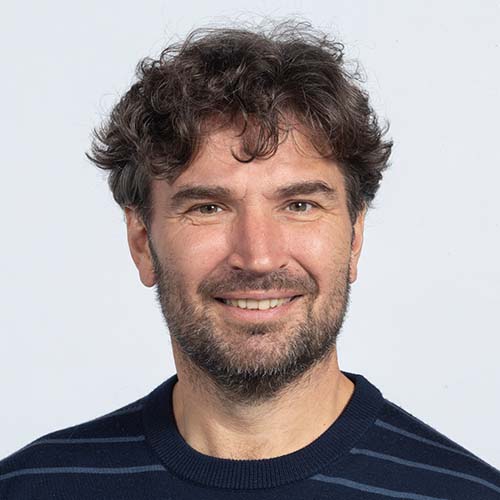
Prof. dr. T.E.C. (Tamar) Nijsten
Principal Investigator
-
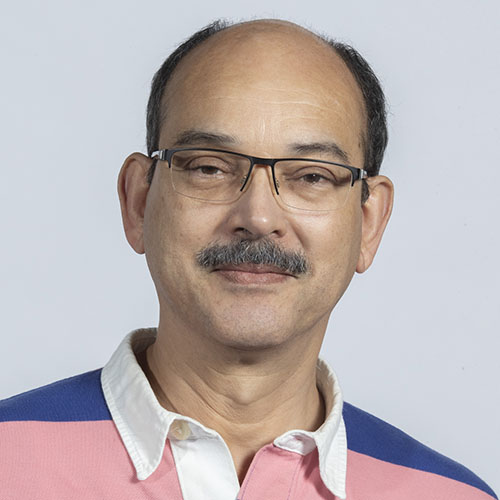
Prof. dr. E.P. (Errol) Prens
Professor in Experimental ImmunoDermatology
-
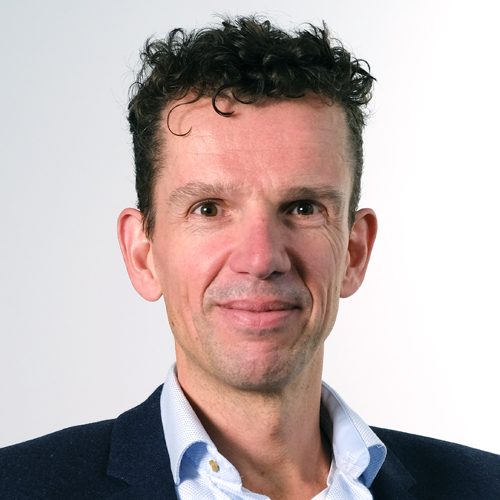
Dr. D. J. (Dirk-Jan) Hijnen
Dermatologist
-
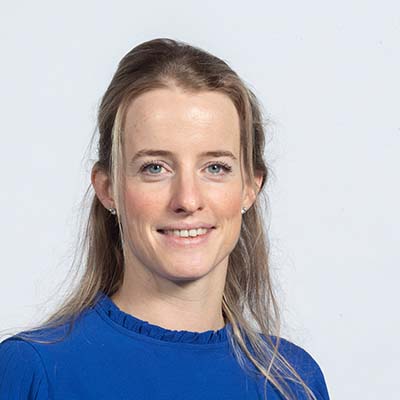
Dr. M. (Marlies) Wakkee
Principal Investigator
Project Leaders
Research Lines
Projects
Basal Cell Carcinoma Follow-Up Study
Energy Based Drug Delivery of Bleomycin in Keloids and Hypertrophic Scars
Epidemiology and genetic epidemiology of skin cancer
Genome-wide Association Studies of-Non-Melanoma-Skin-Cancer
Prediction of melanoma metastasis
Prediction of metastasis in cSCC
Raman spectroscopy in atopic dermatitis
Real world data on advanced cSCC
Skin-Cancer-Care-in-the-Netherlands
Publications
Oncology:
- Wakkee M, van Egmond S, Louwman M, Bindels P, van der Lei J, Nijsten T, Hollestein L. Opportunities for improving the efficiency of keratinocyte carcinoma care in primary and specialist care: Results from population-based Dutch cohort studies. Eur J Cancer. 2019 Aug;117:32-40.
- van Lee CB, Roorda BM, Wakkee M, Voorham Q, Mooyaart AL, de Vijlder HC, Nijsten T, van den Bos RR. Recurrence rates of cutaneous squamous cell carcinoma of the head and neck after Mohs micrographic surgery vs. standard excision: a retrospective cohort study. Br J Dermatol. 2019 Aug;181(2):338-343.
- Verkouteren JAC, Smedinga H, Steyerberg EW, Hofman A, Nijsten T. Predicting the Risk of a Second Basal Cell Carcinoma. J Invest Dermatol. 2015 Nov;135(11):2649-2656.
Hidradenitis suppurativa:
- Vossen ARJV, Ardon CB, van der Zee HH, Lubberts E, Prens EP. The anti-inflammatory potency of biologics targeting tumour necrosis factor-α, interleukin (IL)-17A, IL-12/23 and CD20 in hidradenitis suppurativa: an ex vivo study. Br J Dermatol. 2019 Aug;181(2):314-323.
- Kimball AB, Kerdel F, Adams D, Mrowietz U, Gelfand JM, Gniadecki R, Prens EP, Schlessinger J, Zouboulis CC, van der Zee HH, Rosenfeld M, Mulani P, Gu Y, Paulson S, Okun M, Jemec GB. Adalimumab for the treatment of moderate to severe Hidradenitis suppurativa: a parallel randomized trial. Ann Intern Med. 2012 Dec 18;157(12):846-55.
Atopic Dermatitis
-
de Wijs LEM, Bosma AL, Erler NS, Hollestein LM, Gerbens LAA, Middelkamp-Hup MA, Kunkeler ACM, Nijsten TEC, Spuls PI, Hijnen DJ. Effectiveness of dupilumab treatment in 95 patients with atopic dermatitis: daily practice data. Br J Dermatol. 2019.
- Totté JEE, Pardo LM, Fieten KB, Vos MC, van den Broek TJ, Schuren FHJ, Pasmans SGMA. Nasal and skin microbiomes are associated with disease severity in paediatric atopic dermatitis. Br J Dermatol. 2019 Oct;181(4):796-804.
- Hu C, Nijsten T, Pasmans SGMA, de Jongste JC, Jansen PW, Duijts L.Associations of eczema phenotypes with emotional and behavioural problems from birth until school age. The Generation R Study. Br J Dermatol. 2019 Dec;181(6):1190-1197
Collaborations
Research line: Oncology
- The genetic consortium on squamous cell carcinoma, involving Decode Iceland, 23andMe (Stanford University) and the Nurse Health Study (Indiana University).
- The international pharmaco-epidemiology Keracon consortium, to study the effects of common drugs on skin cancer development and prevention.
- Public Health England to develop prediction and staging models for SCC.
- The University of Nottingham to collaborate on Raman spectrometry research.
- OCOMEN, an international collaboration initiated by the Erasmus MC for outcome measures on congenital nevi.
- The SKIN European Reference Network.
Research line: Eczema
- We play active roles in the International Society of Atopic Dermatitis (ISAD), the International Eczema Council (IEC) and the EADV Task Force for Atopic Dermatitis (ETFAD) to improve patient care (e.g., the development of new guidelines).
- We work with Sanofi/Regeneron, an international advisory board for children.
- We work with the European Academy of Allergy and Clinical Immunology Task Force Group on High Altitude Treatment.
- We participate in many international, multi-centre, randomized and controlled trials with new biologics (e.g., Abbvie, LEO Pharma, Novartis, UCB and Regeneron).
- We participate in the SKIN European Reference Network for Netherton syndrome and ichthyosis, also in relation to atopy.
- We collaborate with other international cohorts in Generation R.
Research line: Hidradenitis suppurativa
- The Pasteur Institute (Paris, France) and the University of Copenhagen (Denmark) on studies on the microbiome, because of their international expertise in HS and the skin microbiome.
- The University of Michigan's Department of Dermatology on the molecular dissection of HS inflammation.
- The SKIN European Reference Network to study and treat rare syndromic variants of HS in a European collaboration.
- The European Hidradenitis Suppurativa Foundation. This global network of HS specialist centres works with similar databases to facilitate fast and collaborative research.
- The European EADV Task Force for HS, Acne and Rosacea, to study HS in a European collaboration.
- European Guidelines on HS.
- Multiple international, multicentre, randomized and controlled trials with new anti-inflammatory biologics (e.g., Abbvie, InflaRX, Novartis, Janssen and UCB).

